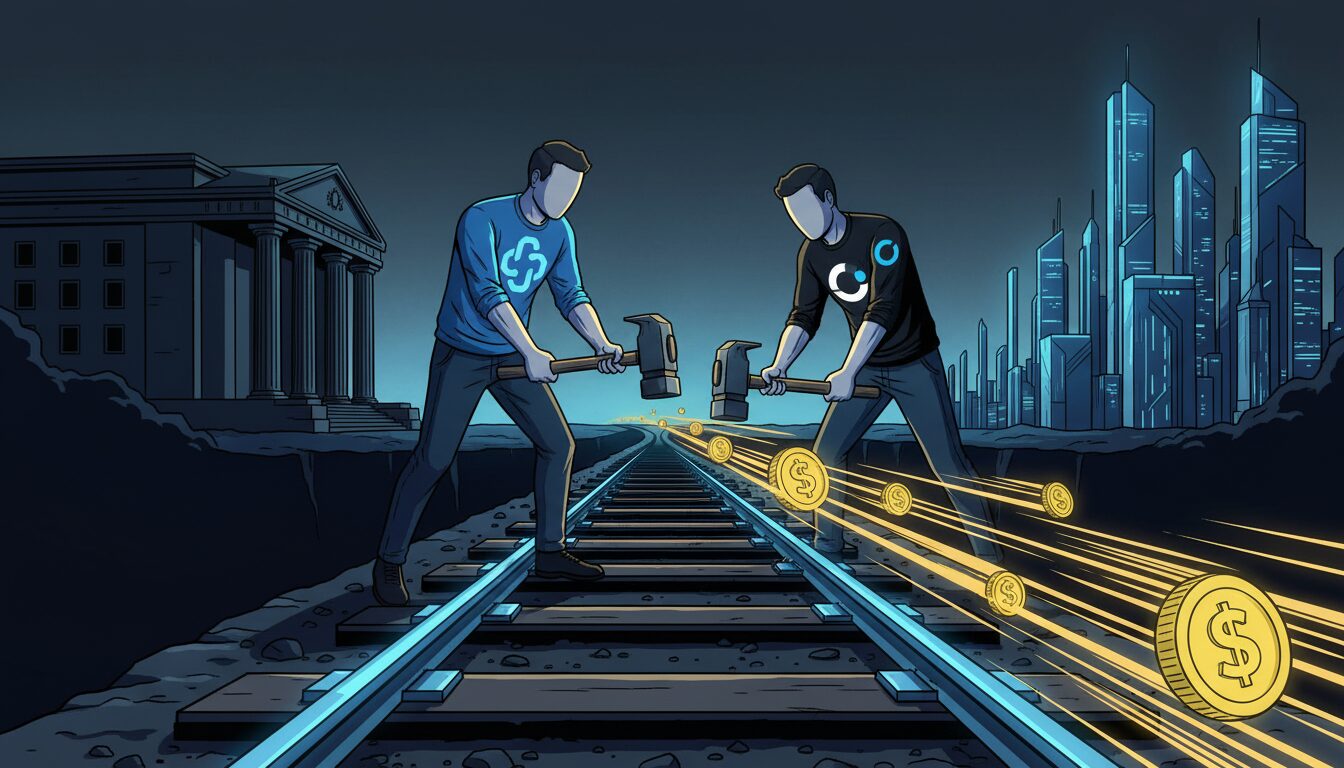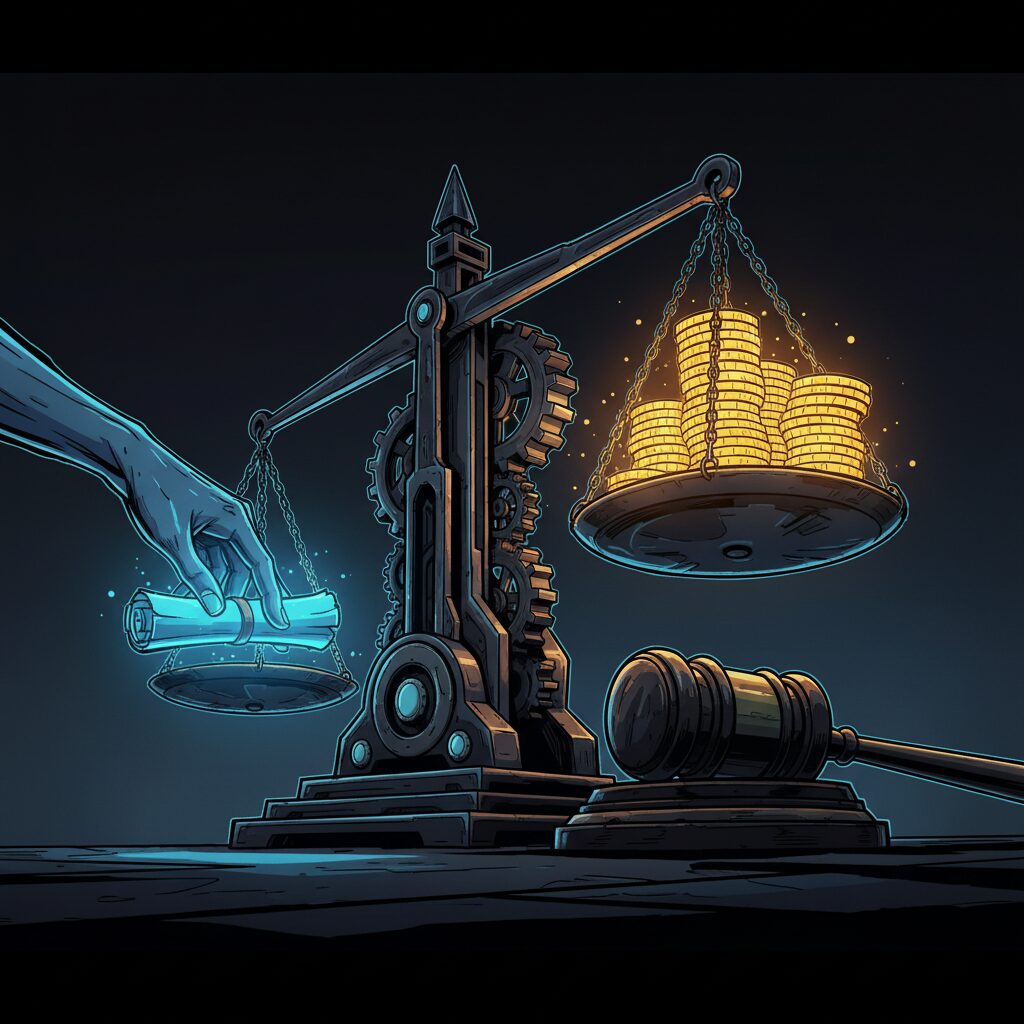Chainlink and Circle: Building the Rails for Real

The New Infrastructure for Digital Finance
Blockchain technology is steadily reshaping global industries, with Chainlink and Circle emerging as two of the most critical players driving this transformation. By advancing the tokenization of real-world assets (RWAs), expanding stablecoin adoption, and ensuring blockchain interoperability, they are laying the essential groundwork for the future of decentralized finance (DeFi). Their initiatives are not just theoretical; they are creating the practical tools and partnerships needed to connect digital assets with the traditional economy.
Chainlink: Tokenizing the Real World
Chainlink has solidified its position as a leader in the RWA sector by enabling physical and financial assets to be securely represented on the blockchain. The project’s intense development pace, marked by over 530 major GitHub updates in a single month, significantly outpaces competitors and highlights its commitment to innovation. This progress is powered by key technologies like the Cross-Chain Interoperability Protocol (CCIP) and Proof of Reserve, which together provide the transparency and security necessary for tokenized assets and stablecoins to function reliably across different networks.
The ecosystem’s growth is further accelerated by its Build and Scale programs. In 2024, the Build program welcomed 41 new teams, leading to 22 fresh integrations that foster developer collaboration. Simultaneously, the Scale program supports 16 different blockchain ecosystems by helping cover the operating costs for Chainlink’s oracle networks. This support has been instrumental in verifying over 300 million cross-chain messages, ensuring robust interoperability and security.
Circle: Redefining the Digital Dollar
Circle is leading the charge in stablecoin innovation by focusing on utility, compliance, and institutional adoption. A key development is the use of USYC, a tokenized money market fund, as collateral for institutional trading. This allows for faster settlement and simplifies regulatory compliance, making stablecoins a more viable asset for large-scale financial players. By positioning USYC as a modern alternative to traditional collateral like Treasury bills, Circle enhances liquidity and trading flexibility across the market.
The company’s focus on meeting regulatory standards is crucial for building trust and paving the way for broader acceptance within traditional finance. Collaborations, such as its work with Binance to integrate USYC and cUSDO, are actively boosting stablecoin liquidity and utility for institutional accounts.
Forging Institutional Ties
Both Chainlink and Circle are successfully bridging the gap between blockchain and traditional finance through strategic partnerships. Chainlink’s collaborations with giants like Swift, Euroclear, and Mastercard showcase its integral role in developing institutional-grade DeFi and next-generation transaction systems. In parallel, Circle’s work with major financial platforms is driving stablecoin adoption and proving the utility of digital assets in regulated, high-stakes environments.
From Theory to Practice
The technologies developed by Chainlink and Circle are already having a tangible impact on real-world applications. These include enabling fractional ownership in tokenized real estate, facilitating faster and cheaper cross-border payments, and building new stablecoin ecosystems. For example, the Korean won stablecoin initiative, Project Namsan by SOOHO.IO, utilizes Chainlink’s CCIP and Proof of Reserve to ensure its stability and interoperability. Industry events like the Aptos Experience Conference and Fintech Abu Dhabi have become key venues for demonstrating these practical use cases to a global audience.
Navigating the Path Forward
While the progress is significant, challenges remain in scalability, security, and navigating complex regulatory landscapes. Blockchain networks must be able to handle increasing demand without compromising performance, and security protocols must constantly evolve to counter emerging threats. However, the commitment to innovation and collaboration shown by both Chainlink and Circle positions them well to address these hurdles. By building foundational infrastructure, they aren’t just participating in the market—they’re actively shaping the future of a more interconnected and efficient global financial system.











